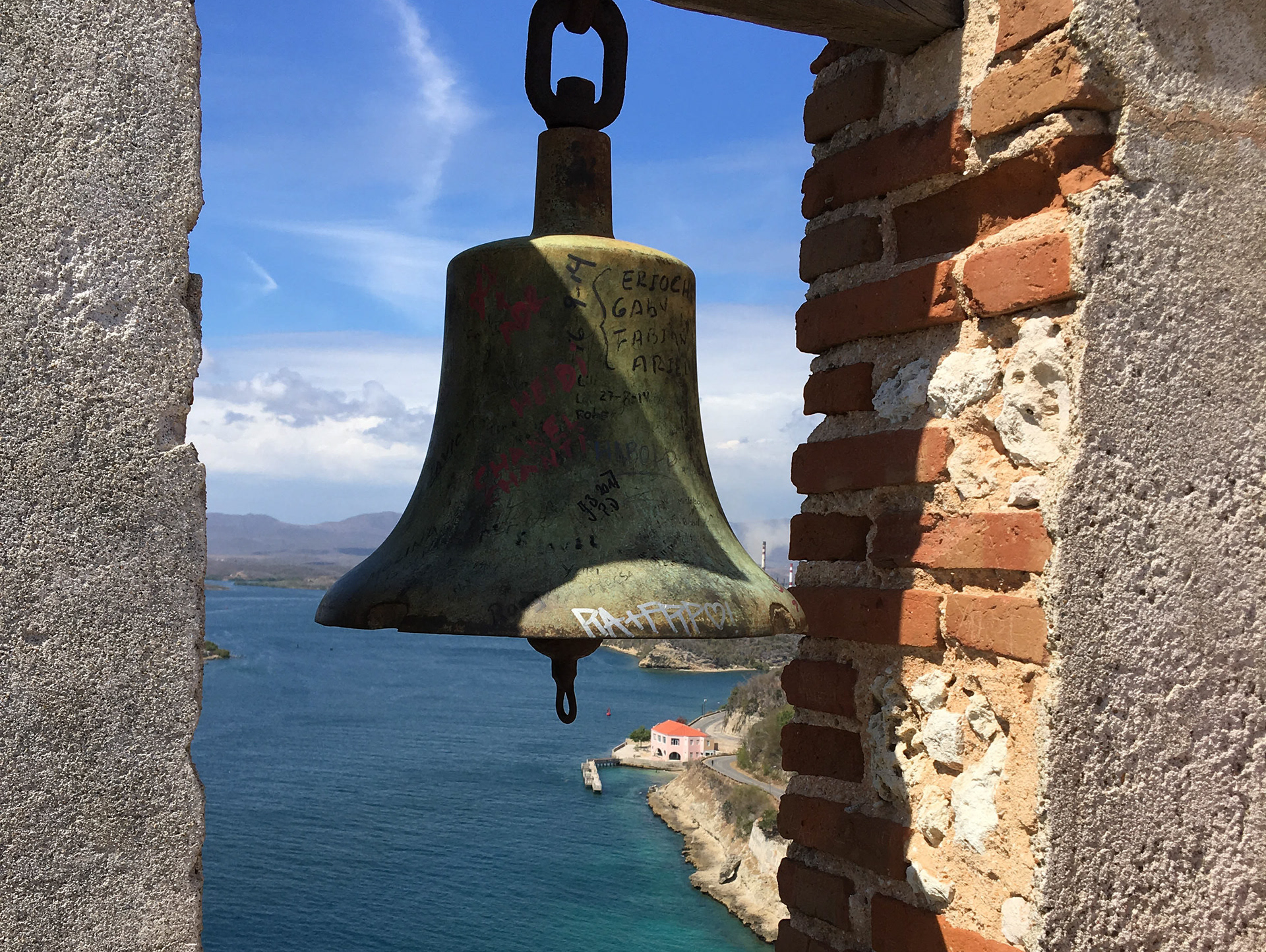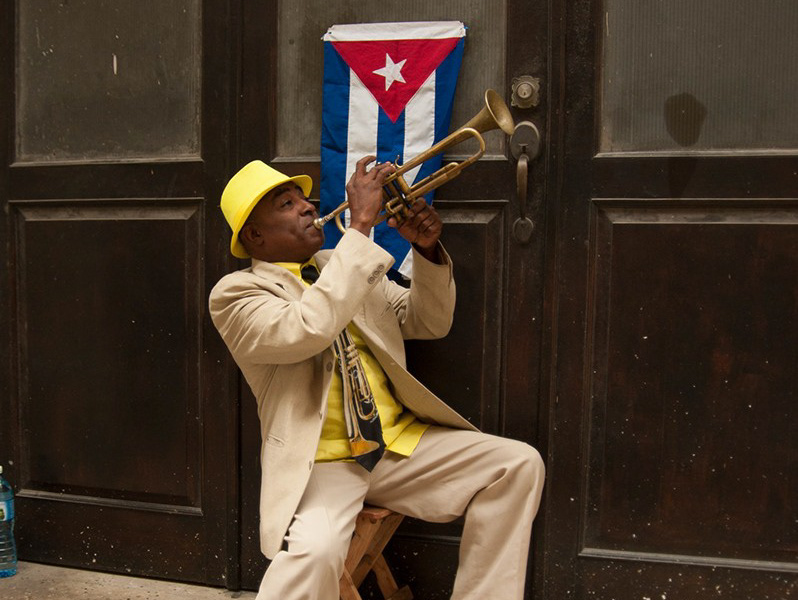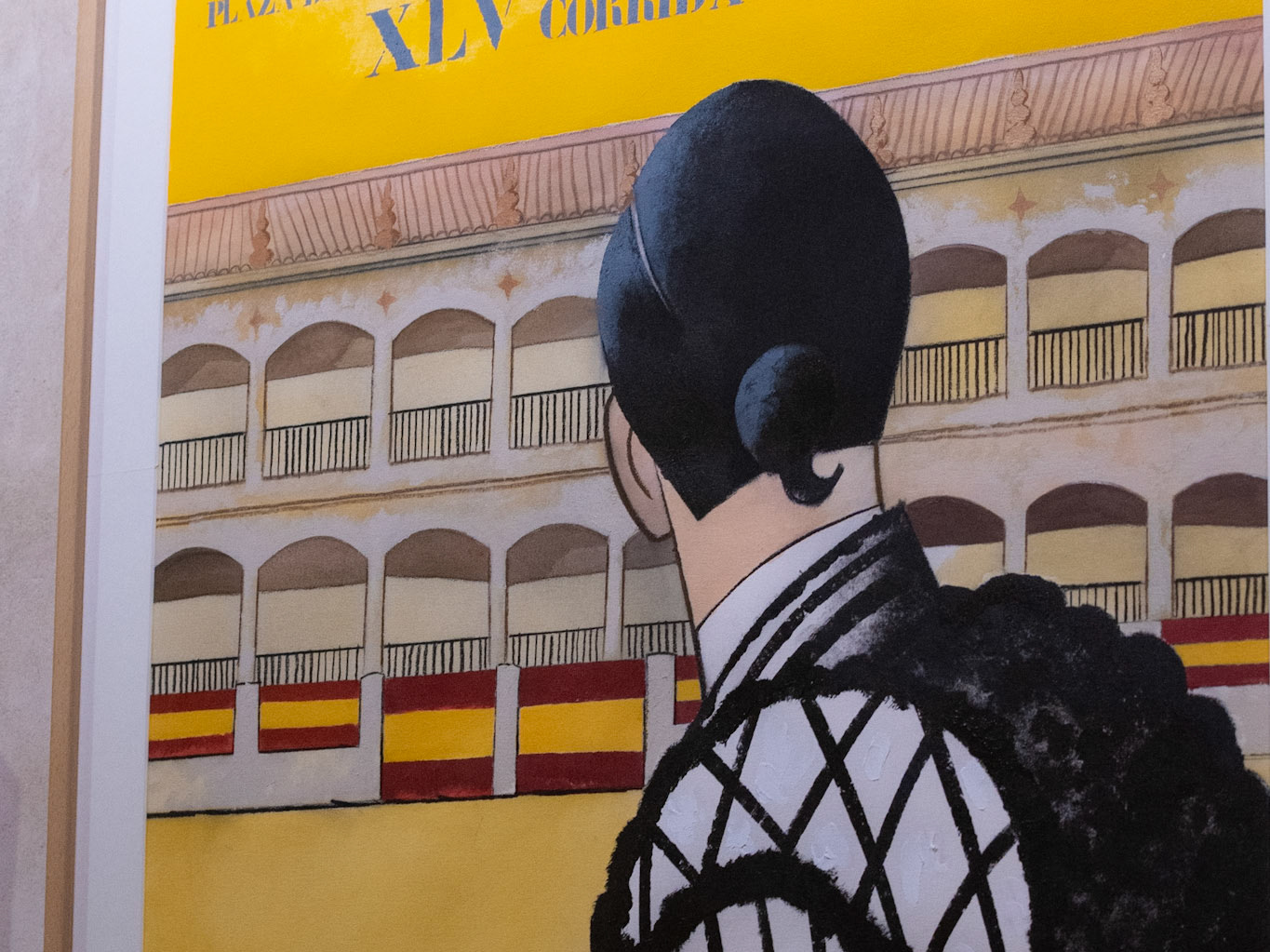After seeing Havana, Camaguey, and points in between our tour bus again headed east. We were to go through Bayamo to Santiago de Cuba, which will be about a 5 hour drive. I spent much of the trip sitting in front by the driver watching the road--and taking pictures.
This is representative of many images encountered on this tour. We arrived 3 months after Fidel Castro's death. His funeral procession proceded from town to town retracing in reverse direction the trip Castro had taken from the Sierra Maestra mountains to Havana at the time of the revolution against the Batista government. We were on this route. Because of the recent funeral trip, we were told there were many more local commemorative signs honoring Fidel than had been present before. "Eternally Fidel, I will be faithful"
"On us depends the future of the Revolution": A sentiment we heard repeated in somewhat different fashion as a quote of the Castro's: "If the Cuban Revolution fails, it will not be because of outsiders, it will be because we have failed."
On this road trip, I was struck with the large variety in transportation modes and especially that much of it was not motor driven. Looking through the upcoming pictures, it would seem that perhaps I failed to snap pictures of "ordinary" modern automobiles. While there was undoubtedly some selection bias, this picture again makes the point: One can see horse drawn carts, bicycles, a truck being used to haul people, a motorcycle--but no modern cars.
What started as a 1959 Dodge station wagon is now a heavy duty hauler. This car would have had a torsion bar suspension new; now it has a solid front axle fitted with leaf springs, a roof rack with a spare tire, and large modern truck mirrors: Plus nonstandard wipers, extra lights, and an altered roofline to provide more interior room.
Most people who use horse drawn transportation are well dressed and appear prosperous
Again and again, the "camione" : A large truck usually of antique American origin with a welded rear compartment designed to haul people. We were told that this is the most affordable type of interurban motorized transportation. In the background? An antique American car...
....which proves to be a 1951 Pontiac.
A tractor with heavy duty trailer hauling ?tobacco ?sugar cane. I didn't recognize most of the tractor types; these are likely of eastern European Soviet-era origin. The haze above the tractor? Exhaust smoke!
Ouch: No springs, a solid suspension. Perhaps explains why the wheels are no longer straight or parallel
Oxen were not commonly seen. Here a heavy-wheeled cart hauling hay driven by a grizzled paysan
Here the grass and other cargo is hauled on horseback with no cart whatever
Entering Granma Province, named after the leaky boat which Fidel and his army travelled back to Cuba from Mexico at the time of the successful revolution. The boat landed in this area and remains preserved at a museum in Havana.
"How could you write the history of Cuba without the history of Granma"
As we travelled down the road, we were frequently hailed by persons trying to flag us down by waving a handful of cash. We were told that as a government-owned vehicle, the bus is required by law to stop and pick up people if they have empty seats, except when the bus is hauling tourists. The ride costs $2-3; many people can't afford this fare. The woman here is wearing blue jeans, fashionably ripped below the knees, with a playboy bunny on one leg and "Playboy crazy (illegible)" on the other.
Entering Bayamo, a couple of men walk past an early 1950s US model military Jeep.
Bayamo. This gentleman has a fancy miniature cart pulled by a goat. He himself is wired for audio and didn't seem to notice our passing.
Bayamo square; we walked to a nearby small venue where we listened to the Bayamo Provincial Choir, who did several a cappella numbers for us.
Street work in Bayamo. Note the large earthmover. Like most recent motorized equipment, this is of Chinese origin. The Chinese are the most recent in a line of foreign supporters from whom a line of credit is sought. The embargo keeps United States firms from participating in most such arrangements.
"Socialism or Death": a large farm. Most are no longer collective; we were told that private farmers and restaurant owners are the 2 classes of unusually wealthy Cubans.
Sun shield here is a worn umbrella...
"Study, Work, and Rifle." The first image I don't recognize, the second is Che Guevara and the last is Camilo Cienfuegos. The latter 2 are revolutionary heroes.
Bicycles. Far from town, their dress and cargo suggest anything but long distance cycling in the hot sun.
1957 Chevrolet wagon. again, modified almost identically to the Dodge above.
Horse tied out along the highway to graze.
1954 Dodge. Most of these vehicles have drivetrains converted to diesel or other non original engines; I was told that the "pistons wore out" when I asked the driver of one such car. They often claim that the cars have been in the family for several generations.
Horse drawn taxi and heavy truck cross paths
Lada, of Soviet or Eastern European origin, is also commonly seen. We were told these did not hold up as well as the antique American autos.
Reworked 1957 Ford. Ones this nice are also taxis, but are typically aimed at the high dollar tourist passenger.
1954 Chevrolet
2 cowboys, one hauling the mail and the other the lady. The man on the left is wearing a stylized pennant with a Union Jack and a cross around his neck.
A tanker hauled by 2 oxen. Some wear on the tires; a solid axle suspension set up.
"Here I cross column 6 for the creation of the second front Frank Pais Garcia". While I am unfamiliar with the military maneuvers to which this refers, one can see from the map that we are about 40 km from Santiago de Cuba
"We are Fidel"
A new Jeep-like vehicle of Chinese origin
Basilica de Nuestra Señora del Cobra. Dedicated to the miracle worker Virgen de la Caridad del Cobra, Cuba's patron saint.
The alter. Above is the Virgen de la Carded del Cobra, accessible by a staircase according to National Geographic Traveler guidebook.
Virgen de la Caridad del Cobre. Her robes are the same cooler as those of Ochun, the Santeria goddess of love, femininity, riches, and sweet water. Santeria is a religion with origins in the Yoruba culture in West Africa, and was brought with slaves to the new world including to Cuba but also other Caribbean Islands and the United States. It is widely practiced in Cuba, being seen in synergy with Catholicism.
El Cobre refers to the adjacent copper mine, established here by the Spanish in the 1530s.




